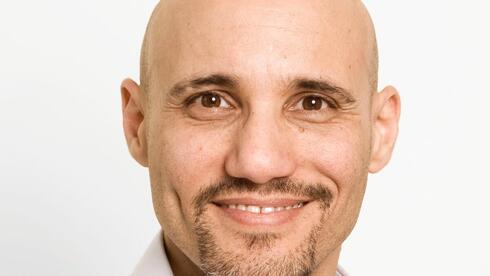
"After such sharp declines, there are often opportunities for investors"
Martha Nadler of IBI added: “The rapid shifts between gains and losses show that those who engage in aggressive trading won’t benefit from any recovery. Mistakes made in such an environment could take time to reverse.”
Under the heavy cloud of uncertainty cast by U.S. President Donald Trump's tariff plan, global markets have been rattled, and trading on Wall Street on Monday was marked by sharp volatility. The session began with unexpected gains, following a rumor that the tariff plan would be suspended for 90 days, but later shifted to losses after the White House denied the report.
This followed two days of declines not seen on Wall Street in the past five years, during which the Nasdaq index dropped by 11.5% and the S&P 500 by 10.5%. The Tel Aviv market also experienced unusual volatility. The Tel Aviv 35 index and the broader Tel Aviv 125 index both fell by more than 3% during the day but ended the session with a modest decline of 0.8%.
According to Martha Nadler, Chief Investment Officer at the portfolio management arm of the investment house IBI, “This is mainly a reaction to the tariffs. It’s not that the idea wasn’t already in the air, but due to the unpredictable and often dramatic decisions by the Trump administration, investors believed it might not actually happen—or at least not with such force. Markets reacted sharply, primarily due to fears of an economic slowdown. Initially, the concern was that tariffs would lead to higher inflation in the U.S., but now the worry is about slowing growth or even a recession. That’s why we saw declines across all sectors.”
“Be prepared for volatility”
Nadler added, “I’m not sure it’s accurate to say that the government is acting against investors. Countries don’t dictate market direction directly—things are more complex. What I do know is that when markets are fully priced—as the S&P 500 was earlier this year after two years of strong gains—declines like this can happen. Geopolitical tensions, wars, diseases—these factors are always present and serve as background noise. That’s why after such sharp declines, there are often opportunities for investors. But you have to find the right mix, and act with caution.”
She explained that the sharp intraday movements on Wall Street suggest that if a correction does come, it could be swift, and therefore investors acting on emotion may suffer. “The rapid shifts between gains and losses show that those who engage in aggressive trading won’t benefit from any recovery. Mistakes made in such an environment could take time to reverse.”
This assumes that the correction will come quickly. But what if it doesn't?
“No one promised a V-shaped correction—sharp declines followed by an immediate recovery. Sometimes things take time. That’s why it’s important to assess your financial needs, look ahead, and prepare for volatility. Sharp market declines are typically triggered by specific events that spark uncertainty. We’re in a period where we must get used to greater volatility due to various such events. This is a classic time to stick to a long-term investment plan and begin gradually identifying opportunities, depending on your investment horizon.”
What stresses investors most?
“The sharp declines and general uncertainty are what stress investors the most—that much is clear. In recent years, we’ve seen significant volatility tied to uncertainty. We saw it during the coronavirus pandemic, and in Israel, during times of war. Investors should be thankful that while sharp declines are happening, the risks are starting to pass. Overall, we’re seeing maturity among investors—there’s no mass dumping during downturns.”
What about savers who pegged their investments to the S&P 500?
“It’s a very broad index and worthy of investment—but only as part of a balanced portfolio. It shouldn’t represent all of an investor’s assets. The recent strength of the local market reminds us why diversification is critical—you shouldn’t place all your investments in a single market.”
Where do you see opportunities?
“So far, the market decline has been broad, so it’s difficult to pinpoint specific sectors or companies. The situation is too complex. The time to identify individual opportunities will come later. For now, opportunities lie in broad market exposure—gradually increasing positions in indices. But the event won’t end tomorrow, and there's no need to rush into the markets.”
“No need to change your portfolio”
Eyal Kaufman, Head of Research at Bank Leumi’s consulting division, advises against making changes during periods of market turmoil. “As long as the investment portfolio is aligned with the investor’s risk tolerance, there’s no need to change it. However, we believe the most significant risk from Trump’s tariff policy is rising inflation in the U.S. Therefore, we recommend that at least 50% of the non-equity portion of the portfolio be indexed to inflation. Diversification through inflation-linked products—such as CPI-linked bonds in Israel and abroad or indexed deposits—is advisable.”
Kaufman adds, “For those still seeking equity opportunities, the U.S. market is not cheap, and we don’t yet see compelling entry points there. Recently, there has been a shift from aggressive sectors like tech to defensive ones like infrastructure. There’s also a movement of capital from the U.S. to Europe. These shifts are reactions to current events, not changes in economic fundamentals. Investors need to be selective, let the dust settle, and analyze who will benefit or lose from new US policies. We also believe the tariffs may simply be a negotiating tactic—not a final decision.”
What about those heavily exposed to the S&P 500?
“If investors have significant exposure to the tech sector—through the Nasdaq, for example—or are heavily biased toward the S&P 500, portfolio diversification is essential. That doesn’t mean selling everything now. It’s not wise to make dramatic changes during periods of turmoil. But in general, a well-diversified portfolio—across sectors, geographies, currencies, and asset classes like stocks and bonds—is better positioned to weather volatility. Each investor must tailor their mix to their individual risk tolerance.”
















